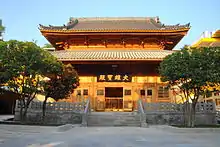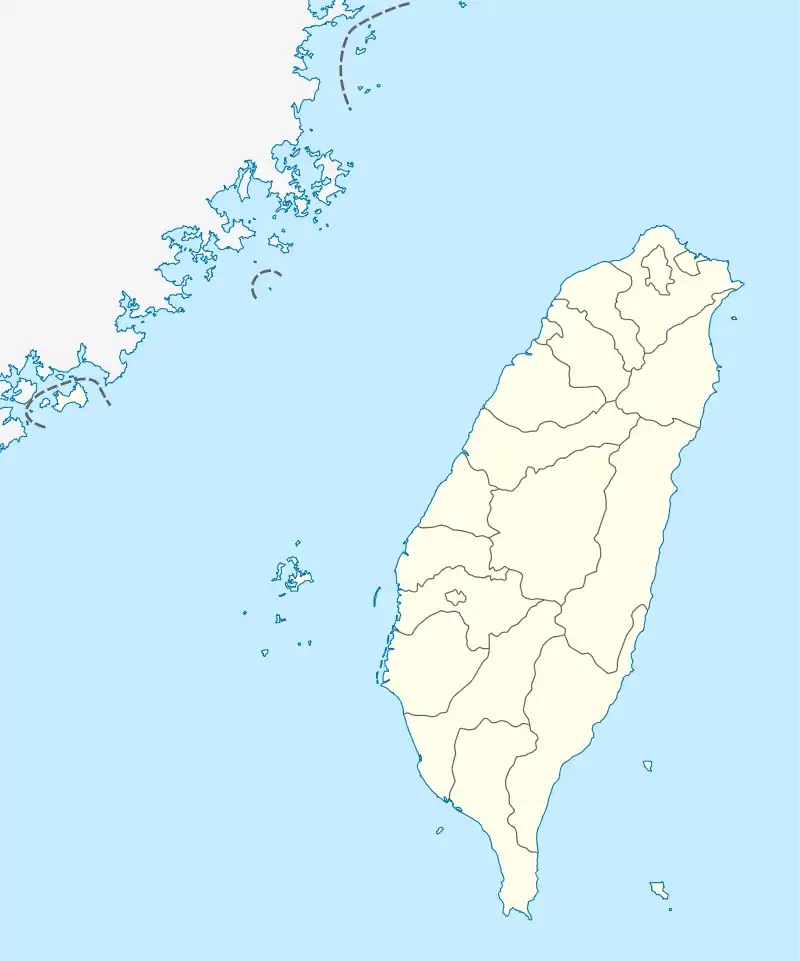Linji Huguo Chan Temple
Linji Huguo Chan Temple (Chinese: 臨濟護國禪寺; pinyin: Línjí Hùguó Chán Sì) is a Buddhist temple located in Zhongshan District of Taipei, Taiwan.[1]
| Linji Huguo Chan Temple | |
|---|---|
臨濟護國禪寺 | |
 | |
| Religion | |
| Affiliation | Buddhism |
| Deity | Linji school |
| Location | |
| Location | Zhongshan, Taipei, Taiwan |
 Shown within Taiwan | |
| Geographic coordinates | 25°04′20.88″N 121°31′14.93″E |
| Architecture | |
| Style | Chinese architecture |
| Founder | Meishan De'an (梅山得庵) |
| Date established | 1911 |
History
Construction of Linji Huguo Chan Temple, designed by Japanese monk Meishan De'an (梅山得庵), commenced in 1900 and was completed in 1911. The statue of Sakyamuni was consecrated on June 21, 1912.[2]
In April 2007, the Taipei Municipal Government has allocated NT$18.05 million for the reconstruction project.
Architecture
The extant buildings include the Shanmen, Four Heavenly Kings Hall, Mahavira Hall, bell tower, drum tower and a pagoda.
Mahavira Hall
The Mahavira Hall was built with double-eaves gable and hip roofs. It modeled the architectural style of the Song dynasty. On each of the main ridge is a tile named "Onigawara". The Mahavira Hall houses statues of Sakyamuni (center), Guanyin (right) and Ksitigarbha (left).
References
- 台北圆山临济寺原住持盛满法师度生圆满 安详圆寂. fjnet.com (in Chinese). 2009-07-01.
- Huang Lan-Shiang (2005). "The Chung-Hwa Institute of Buddhist Studies". Chung-Hwa Buddhist Journal. 18. pp. 139–206. ISSN 1017-7132.
| Wikimedia Commons has media related to Huguo Chan Buddhist Temple of The Linji School. |